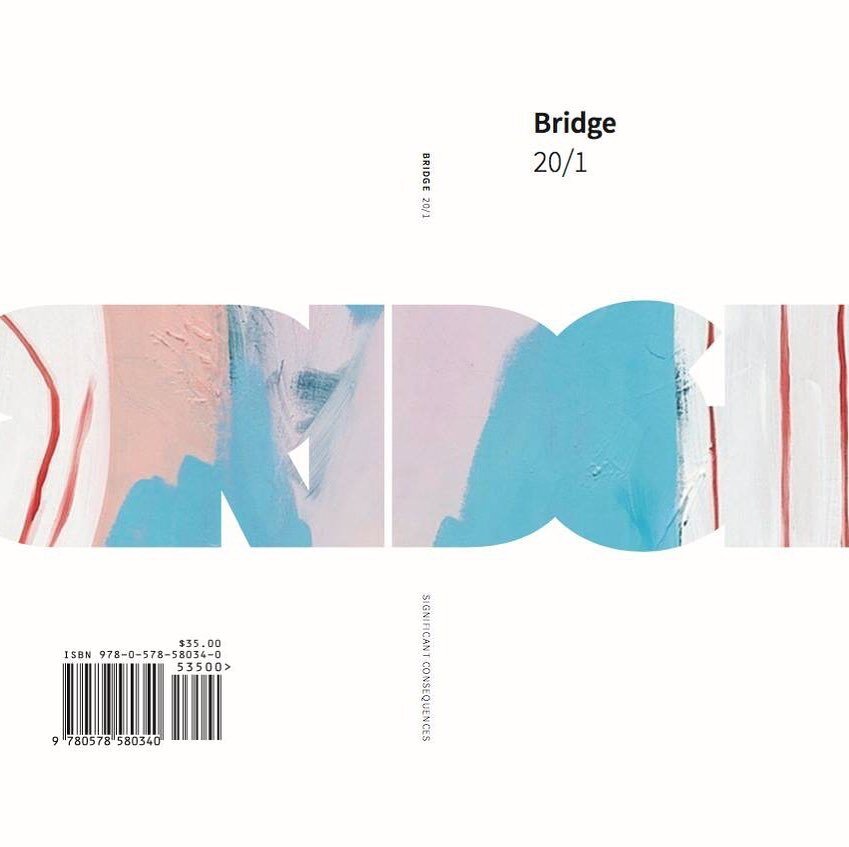Since 1999
Designed by Faust Ltd. & Michael Workman Studio
This program is partially supported by a grant from the Illinois Arts Council Agency. This project is partially funded by the National Endowment for the Arts.
Bridge is a proud member of the following alliances:
Welcome to Bridge. Only the most recent season of magazine articles is available here. Please click here to create an account & access past articles, general archives, the new Bridge Video streaming service, also updated weekly in-season, & more.
Featured from the archives: click the poem to read the second of two poems from Szymborska featured in Bridge V1N3, pages 106-107.

REVIEW: Pooja Pittie: “Only in Dark the Light” at McCormick Gallery
“‘Only in Dark the Light’ is Pooja Pittie’s third solo exhibition at McCormick Gallery, which has represented the artist since 2016. The seven paintings and three fiber art installations on view were made in 2023 and 2024. The paintings build upon yet depart from the artist’s previous work, while the fiber art carries her evocative abstraction, exuberant color, and irregular lines into a new medium.
“My first impression of the show was formed on the sidewalk. Two intriguing works—’Nowhere to Hide’ and ‘Be in Softness’—were on view through the windows. Nowhere to Hide is a 40-inch square of colors laid in rhythmic, choppy strips. I misperceived it as collage, but once in the gallery, saw that it was canvas painted with acrylics—greens, yellows, reds, and blues washed the surface like watercolors. What I had seen as collage were actually wavering lines in the foreground that appeared to segment the color-washed background into strips.”

FICTION: “Henry Goes to Dancing School” by Richard Holinger
A late October Saturday night wind off the lake cut through Henry’s bulky olive winter parka, prickly wool suitcoat, and button-down, heavily starched white shirt. Before dinner, playing two-hand touch anywhere in Lincoln Park, low clouds had threatened snow. Now, yellow streetlights lit the Inner Drive’s sidewalk as Wes and Henry slogged their way south to the Fortnightly.

INTERVIEW: Curator Jadine Collingwood On Nicole Eisenman’s, “What Happened” at the MCA Chicago
The morning of the press event for Nicole Eisenman: What Happened at the MCA, I am so nervous I get downtown an hour early. I feel underqualified, underprepared, and underdressed, and I haven’t even made it into the building. I wonder if I should have brought some kind of felt hat with an index card that says PRESS. I fear they won’t even let me in the front door without my ‘PRESS’ hat, and I frantically google milliners near me. The MCA is large and imposing, and I feel very small and meek and hatless.
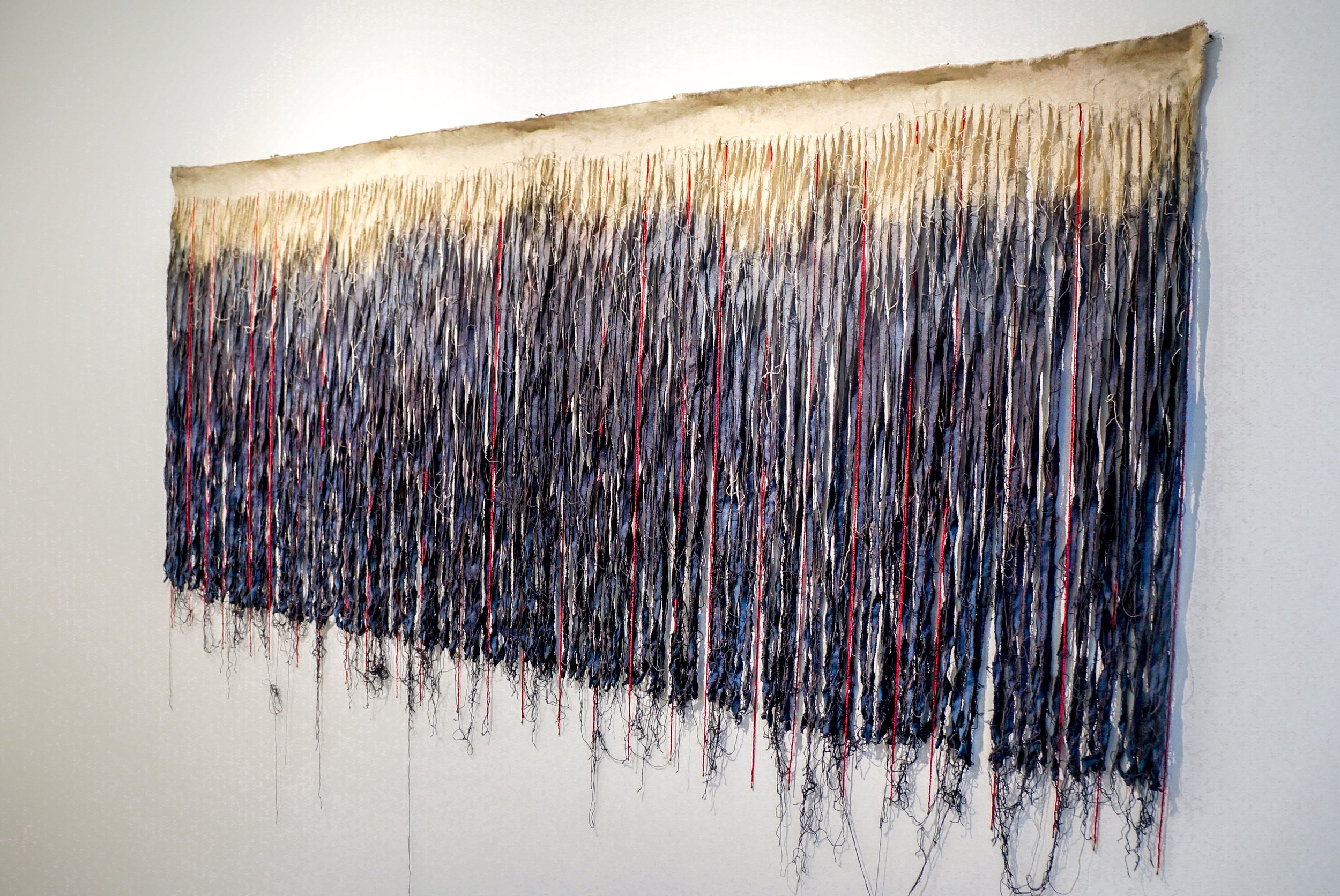
REVIEW: Building On Heritages and Reclaiming Indigeneity: “Native Futures” at the Center for Native Futures
“Museums can be very painful sites for Native peoples, as they are intimately tied to the colonization process,” Amy Lonetree, a Ho-Chunk Nation art historian, wrote in the Introduction of Decolonizing Museums: Representing Native America in National and Tribal Museums [1]. For decades, the public has shaped their understanding of the Native people and their culture around museum and curator-led collections and exhibitions that are often outdated and unrepresentative, erasing not only the indigenous community’s history and heritage but also the progression and development.
As such, indigenous people must reclaim their collective identity.

REVIEW: Intimate Encounters: dropshift dance, “Rooms” at Colvin House
The historic Colvin House, a 1909 Prairie style house by architect George Maher, was the setting for dropshift dance’s newest evening length production Rooms. The piece, “a sensory recapitulation of our past” was the culmination of a two-year process that brought together 3 sections of the work, DWELL/burrow, bloom and objects, that had previously been performed separately.

REVIEW: “Absolute Animal” by Rachel DeWoskin
Rachel DeWoskin’s book is a journey through feelings, behaviors, and actions. The poems within act as a bridge of expression between how all living fauna act on their experiences. There are tales of traveling, taxidermy, fear, the loss of a father figure, and everything in between. The perspectives range from within, be that an inner animal, an inner child, or whatever voice that controls someone’s impulse.

FICTION: “Dead Skin” by Maria Giron
I read a study once that said our idea of pain was stronger in the present than when we were asked to recall it later. We’ll say “It wasn’t so bad after all” when it had been bloody shitty. Just like school. The nostalgia of the place. Maybe the more you suffered someplace, the more you missed it. The more that place made you. So, sometimes, we come back to it.
Life outside was dull. Faded out. Too many spins in the washing machine. Bits and pieces coming out smaller and dimmer. Waiting in line at the grocery store, thinking “Shit you forgot to weigh oranges, did you have time to go back and weigh them while leaving the rest of the groceries on the automatic belt by the cashier?” People stood behind me. A girl with a pack of tampons and an ice-cream birthday cake beginning to melt. An old guy with dog food and six bottles of coke. I just wanted to curl into a ball. So I left all my groceries on the belt, and walked out, just as the cashier's voice shouted, "Who's groceries are these? Hey? hey!" and I was gone.
![PREVIEW: “[we don’t know yet] what cinema can do:” Onion City Film Festival at Public Works](https://images.squarespace-cdn.com/content/v1/5e34d387d2a0e803a2f5cd65/933f9b14-156a-402e-9efd-e945e40534c8/Screenshot+2024-03-31+at+8.53.57%E2%80%AFPM.png)
PREVIEW: “[we don’t know yet] what cinema can do:” Onion City Film Festival at Public Works
The Onion City Film Festival returns to Chicago April 4 and will run for ten days. Programmed by curator, writer and LITHIUM/TNL gallery co-founder Nicky Ni, the festival highlights experimental film and video art from internationally renowned artists. On April 5, the festival will join with the Center for Concrete and Abstract Machines [CCAM] to host [we don’t know yet] what cinema can do - a night of live A/V performances alongside three installations - at Public Works.
“The Question of Grief” (2023), a piece by Liyan Zhao incorporating lecture, light, sound and found footage, will interrogate the nature of grief and its effect on imagination and folklore. Hunter Whittaker-Brown’s “The Emissary (A Prayer)” (2024) is a vocal piece with live sound and visual processing. Brown’s work is informed by Black cosmology and Afrofuturism, and looks at mass media through an archival lens. “I am invested in breaking down the form of moving image and further unpacking the possibilities of its reconfiguration as a synecdochic act of disassembling and remaking contemporary culture at large,” Brown wrote of this piece.
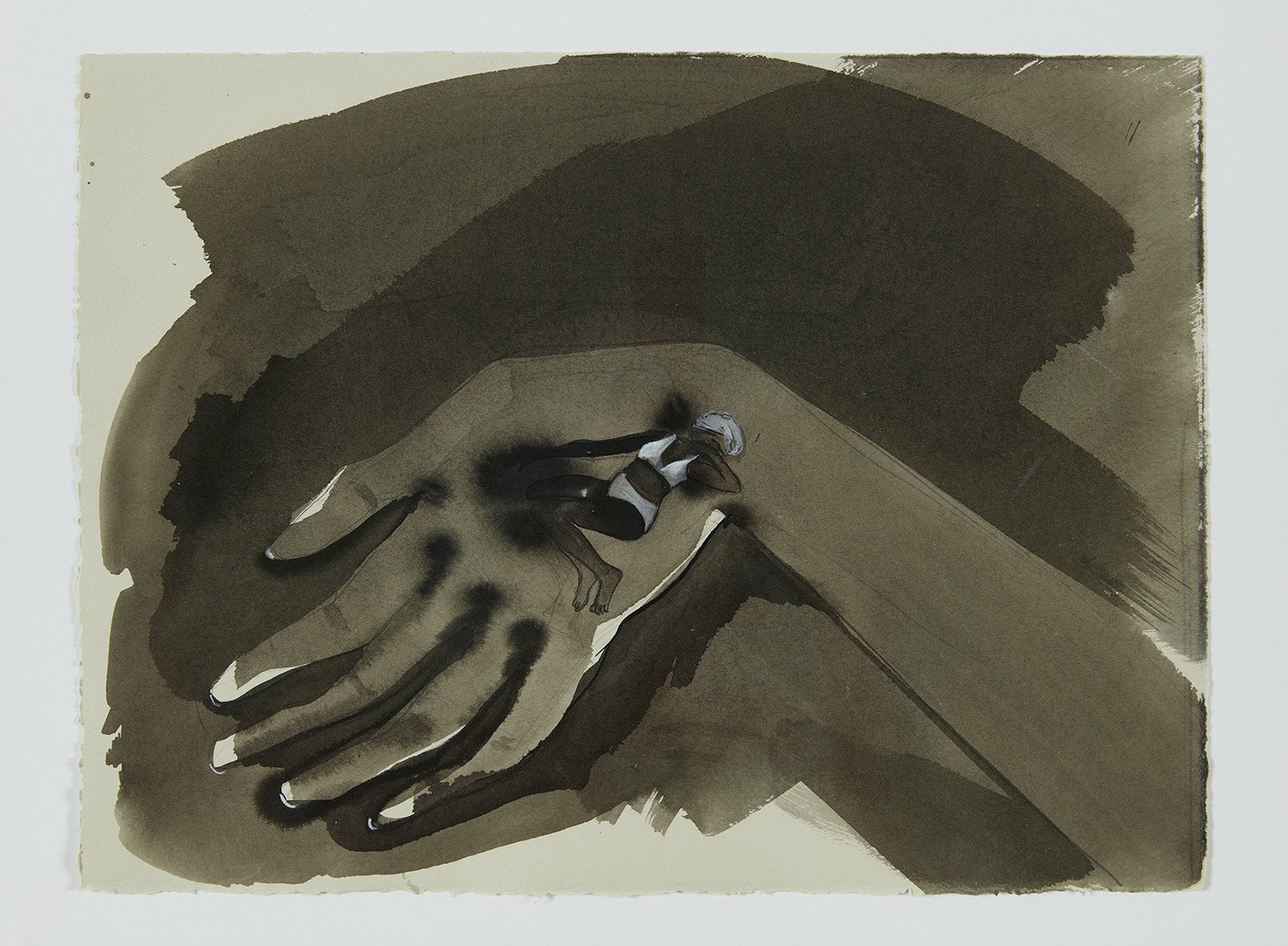
REVIEW: Kara Walker, “Back of Hand” at the Poetry Foundation
Kara Walker's new show currently up at the Poetry Foundation is quiet, meditative, discreet and a welcome and refreshing departure from the usually iconoclastic and intense work that those accustomed to Walker's output would be familiar with. The title of the exhibition suggests a rebuff, a slap in the face, but also a familiarity, knowing something "like the back of your hand." “Back of Hand” displays works on paper by the American artist that foreground her long-term engagement with both language and text.
Featuring excerpts from a handmade 2015 book comprising of a series of 11 type-written pages with ink and watercolor illustration under-glass vitrines, and the large-scale drawings “The Ballad of How We Got Here” and “Feast of Famine,” installed in the lobby, the exhibition contends directly with the contradictions of misremembered histories through Walker's pointed representation of the horrors beneath the antebellum South's genteel facades.

REVIEW: Christine Tarkowski, “the old Moon in the new Moon's arms” at the Arts Club of Chicago
Taut wires on the west side of the Arts Club building run from a fence to the base of the roof. Amorphous metallic forms hang along their length. I’d bet that upon being asked “What is this thing?” most passersby couldn’t come up with “a sculpture.” It possesses the quotidian look of windchimes, not the assertive indecipherability of high art, and blends imperceptibly with the greater sights and sounds of the city. But it is there, in a handful of wispy, lustrous presences. And it is watching.
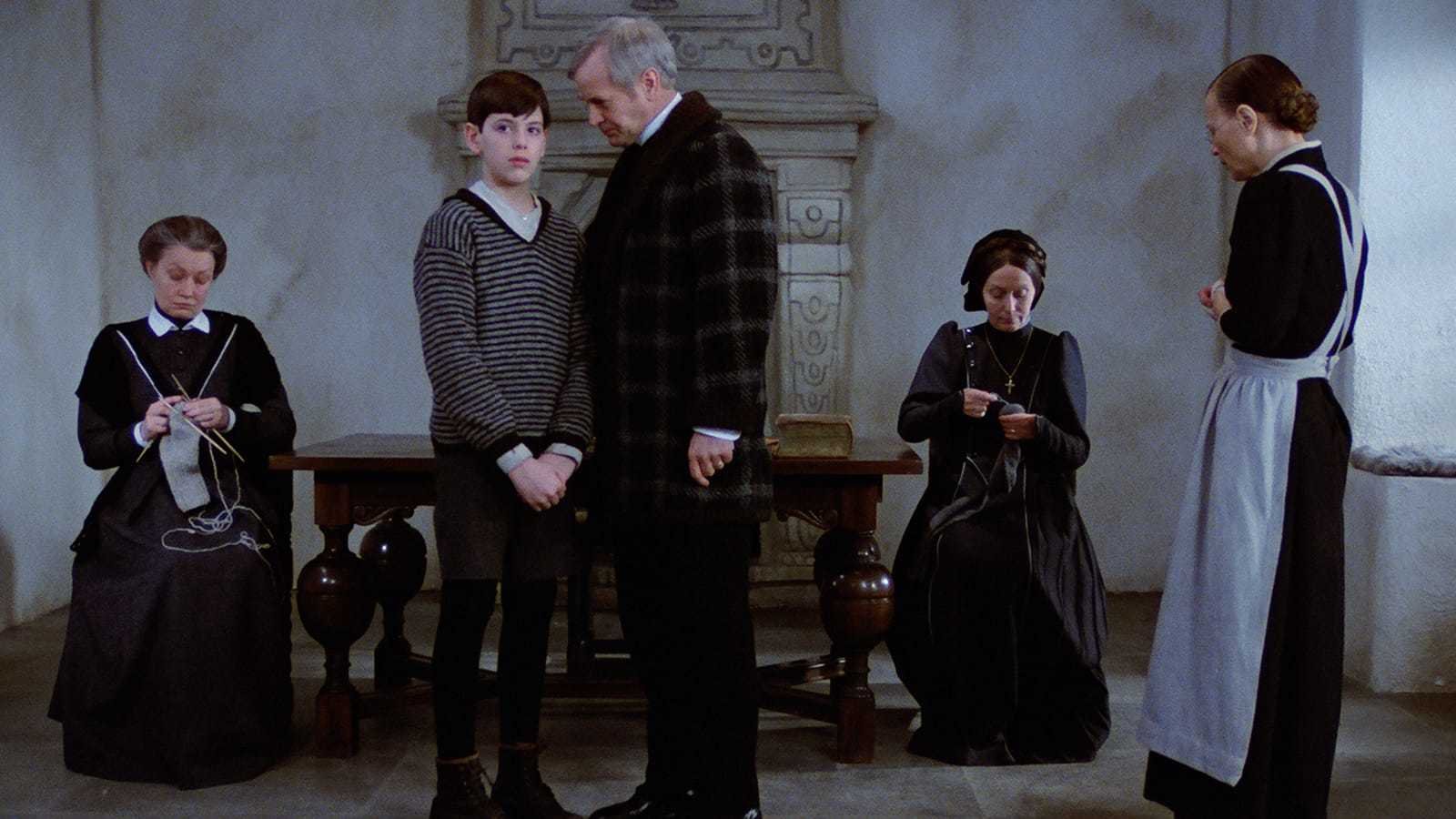
REVIEW: “Fanny and Alexander” at the Gene Siskel Film Center
In February, the Gene Siskel Film Center concluded their second annual Settle In series with a screening of Ingmar Bergman’s 1982 epic, Fanny and Alexander. The series, which aired over January and February, put its focus on long films- films that, through their extended runtime, require the viewer to, well, settle in.
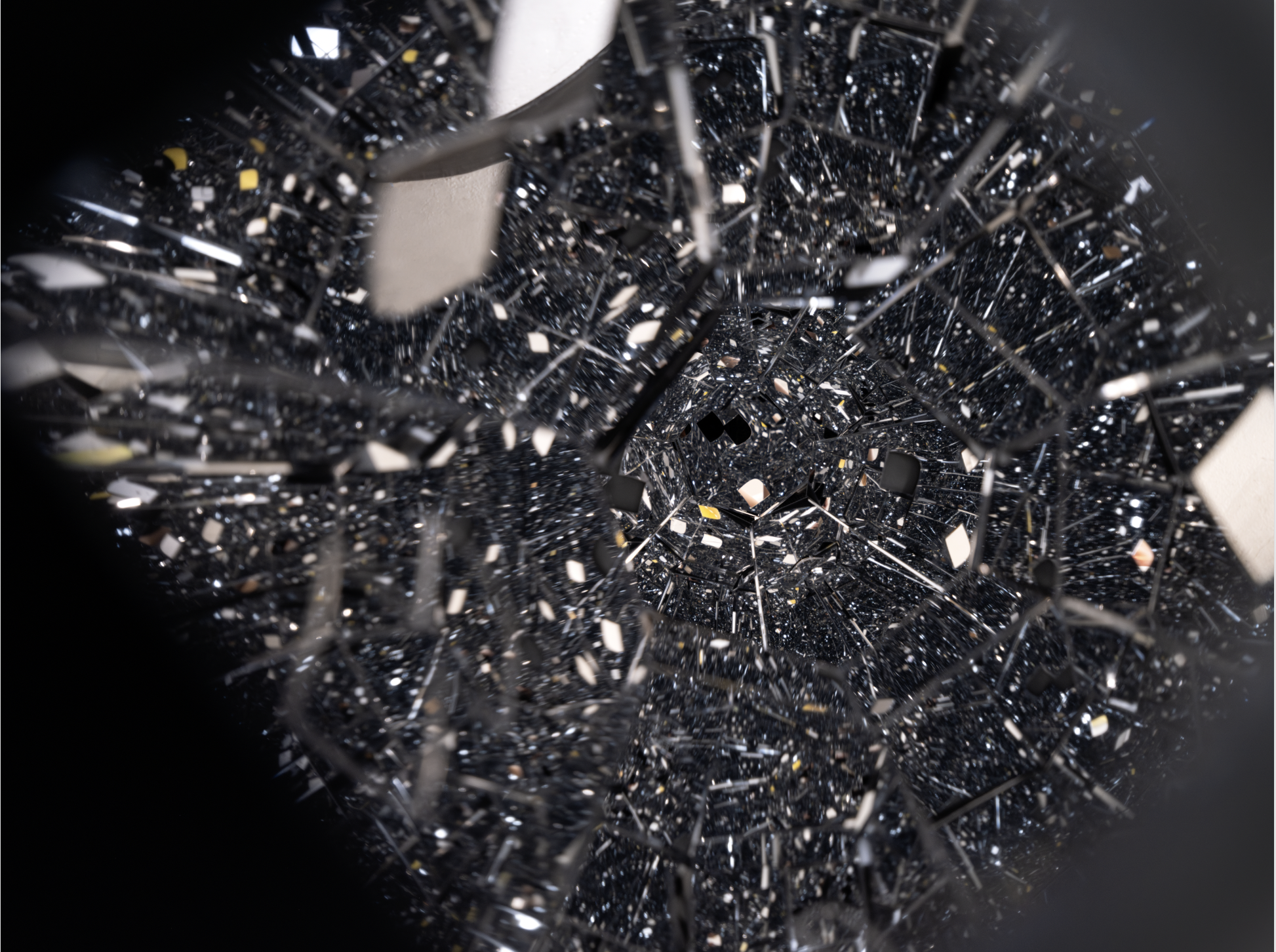
REVIEW: The Perspective of Nothingness; Chicago Works: Maryam Taghavi مریم تقوی at the MCA Chicago
A dot in the English language is a conclusion. A period, an ellipse — a dot is where things end. Nothing else shall be said. It is absolute.
A similar absoluteness is present in the Farsi dot, known as the “noghte.” Its quantity and placement define and significantly alter a letterform’s pronunciation and, therefore, its meaning. The noghte gives birth to all meanings in the language, like a seed imprinted with a tree’s DNA in its entirety.
So, what happens if absoluteness becomes abstract, definitions blur into interpretations, and ambiguities replace clarities? What happens when everything is replaced with nothingness and predefined concepts are erased? Is the remainder endless possibilities or unfathomable chaos when all external definitions are removed? Does the perspective of nothingness invite, interrogate, or intimidate?

REVIEW: The Painted Label: A Review of CAB 5, “This Is A Rehearsal” at the Chicago Cultural Center
Throughout much of history architectural building types accommodated a number of overlapping needs in society. Religious and government buildings served as marketplaces, workshops as homes, ancient temples as a central treasury or bank, etc. Material and labor were scarce, and cultures made do. It was not until after the industrial revolution in the late 19th into the early 20th centuries that building types and single-use structures proliferated (think: energy generation, factories, lighthouses, railway stations, prisons, laboratories, crematoriums, airplane terminals, observatories, bowling alleys, malls, exhibition halls, reactors and the like). Conversely, artistic disciplines developed ever tighter ground rules to rid themselves of literary influence and define their distinctive merits and proper domains after an onslaught of new cultural forms brought about by the same cultural forces of industrialization (think cinema, photography).
Architectural practices expanded in order to define and solve the increasingly complex problems brought about by the emerging modern economy. These practices developed a tight methodology and a focused sense on function. On the other hand, the other major artistic disciplines countered the expansion of cultural forms by defining down, or restricting, the possibilities of their medium to guarantee a form of cultural production that only that medium could provide. Better to assert less, but to assert with authority. The common element between the two reactions (architecture and the other artistic disciplines) was (and still is) specificity, to assert in a meaningful way. Then a late 20th century backlash advocated, necessarily, for a new complication of these disciplines – an opening up of the space of possibility between them — the interdisciplinary. But oddly, this no man’s land of interchange, redefinition, research and expansive cultural development is accompanied by curious limitations – a constricting of the horizons of what these practices uncover, reveal or state. This interdisciplinary expansion is eclipsed by a limited statement of purpose. Meaning narrows while practice claims mushroom.
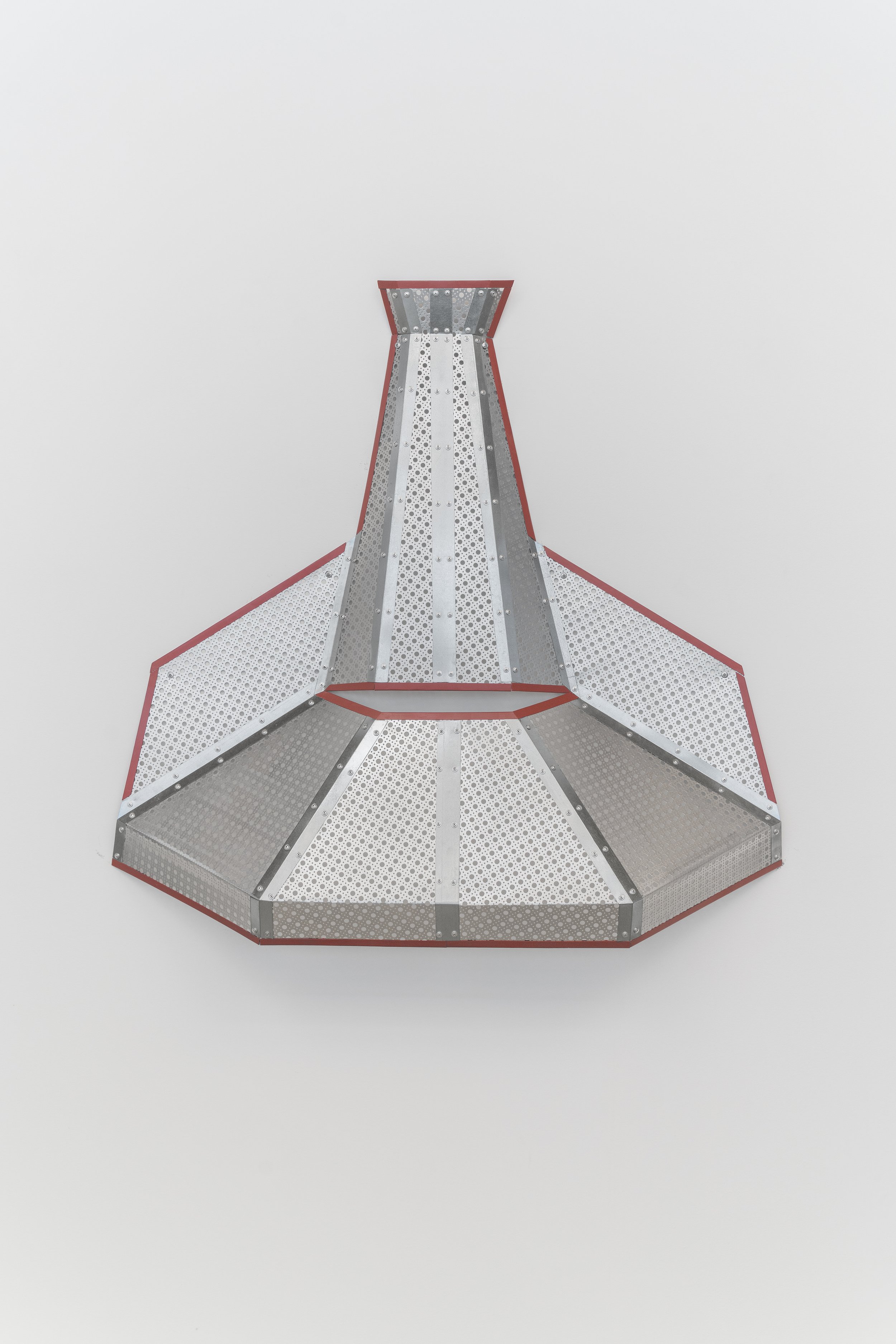
REVIEW: Diane Simpson at Corbett vs Dempsey
This is my fourth season as Couture Editor of Bridge. I typically cover subjects related to fashion, and it is through that lens that I approach Diane Simpson’s exhibit at Corbett vs Dempsey. The artist has shifted her focus, in this new body of work, from articles of dress that surround the human body, to seating structures that offer support for it. Upon entering the gallery, I immediately spot a shiny sculpture hung on the distant wall of the gallery. The object attracts me like a magpie. I swoop in, weaving my body through the flock of attendees to get a closer look at the work.
Quilted Settee is a silver wall relief, fit and flared with lines that resemble a gored princess dress cut from steel sheet metal, punctured to resemble an interlaced caning pattern. The object is cleverly fluted with flat, angled planes, and red piped seams that visually confuse the convexity of a figure with the concavity of a chair. Many of Simpson’s sculptural forms, whether referencing architecture or clothing, have a figurative quality, acknowledging forms built for human bodies.

REVIEW: “Milking the Beast and Going To Hell” by the Runaways Lab Theater at Links Hall
Experimental theater in Chicago can sometimes feel constrained by prosceniums and routine when it’s not an immersive production or part of the Chicago Home Theater Festival which is, in part, how this production got its start. Or rather, how the Runaways Lab Theater got its start, under the direction of founder Olivia Lilley.
Prior to her Artistic Director role at Prop Thtr when I first met her through the Private Readings series, she was just starting to stage the living room productions of “Faust” that brought her early acclaim.
Continuing on under the artistic direction of Jessie McCarty and Dylan Fahoome, “Milking the Beast and Going to Hell” is one of the early devised theater frameworks of the company, alongside other memorable thought experiments including “Doing Drugs and Dying in Space” which dates back just as far.
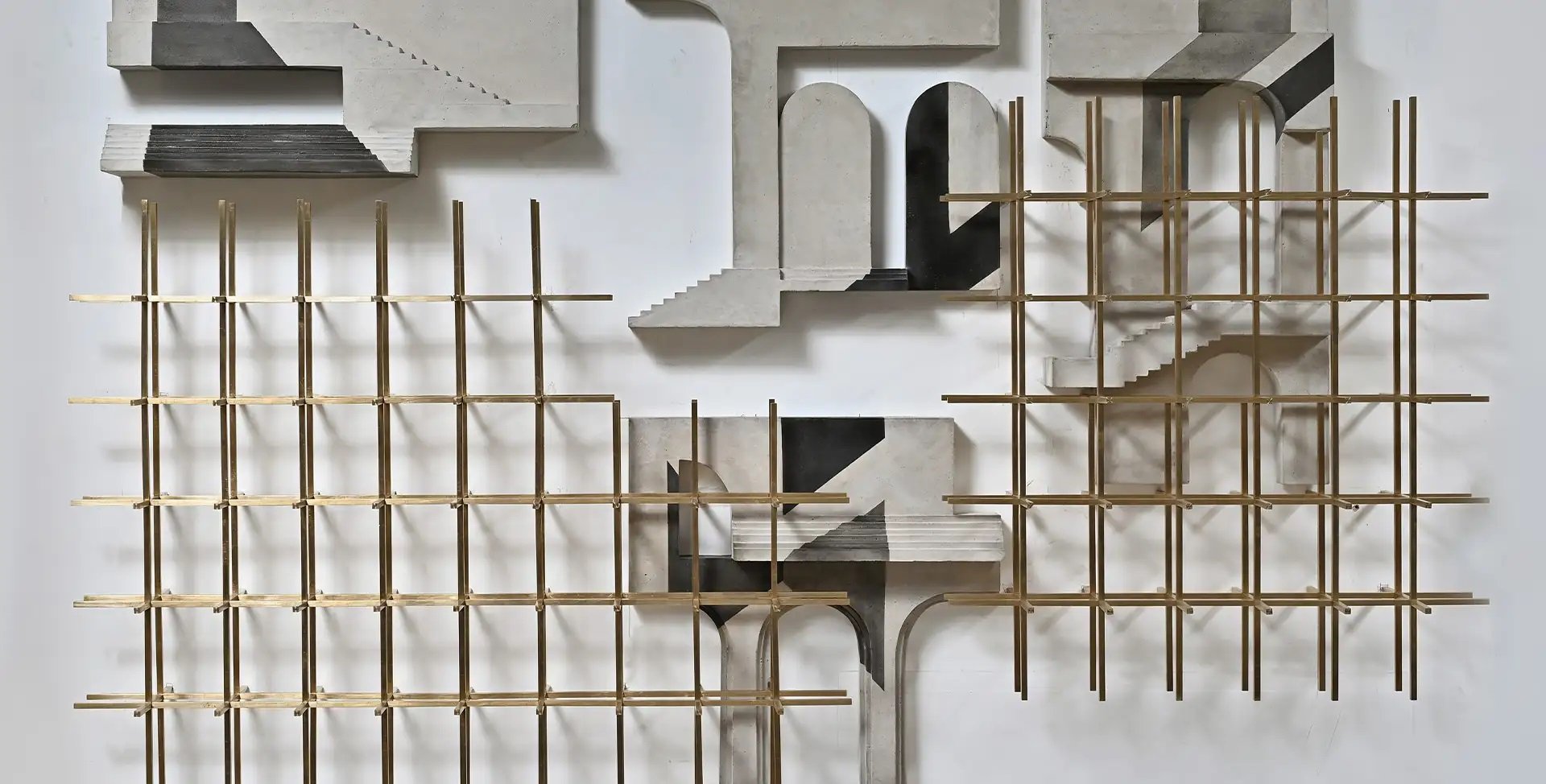
REVIEW: Living Memories in Lived Spaces: Rathin Barman’s Unsettled Structures at the Arts Club of Chicago
Do you remember your childhood home? The small kitchen table everyone gathered around, the vintage oak cupboard with Victorian moldings your grandma bought when she got married, or the giant flower quilt you wrapped yourself in every night?
What about the first apartment you rented as you hunted for a job after college? The historic brick walls and marble decors left from decades ago, the tiny stairwell with marks left by people moving furniture in and out, or the cozy book nook you built yourself based on a Pinterest post?
We enter, exist, and interact with various architecture throughout our lives, from private residences to public buildings. Our living experience manifests in the spaces we live in, whereas the space redefines and alternates our experience and perception simultaneously. As a result, architecture becomes cultural, memorial, and archival, carrying on a collective narrative even long after its tenants’ departures.

REVIEW: Faith Ringgold, “American People” at the MCA Chicago
The Museum of Contemporary Art is host to not just another activist artist capstone 4th floor exhibition and retrospective but to Faith Ringgold! This themed pattern of exhibitions is what I imagine visitors truly love about the MCA. Faith Ringgold: American People nestled into the 4th floor loop like a glove, and was bustling with viewers and tours alike following the familiar flow repeat visitors know by heart: enter on the left.
The rooms are generally in chronological and thematical order with the very back/middle of the exhibition having a quiet viewing room to read further literature, watch relevant films, and listen to captured sound bites of Ringgold’s activism and life work. This is something I admire about the newer exhibitions in the MCA that these alternate space for continued learning through different methods are supported and shared with attendees. Ringgold’s work though, follows issues from the U.S Civil Rights Movement, feminism, identity, grief, and other activism work. She also had a breadth of mediums at play too throughout her artistic career, from figure paintings early on, to textile work, to sculpture, abstract paintings, community organizing, quilts, illustration and more.
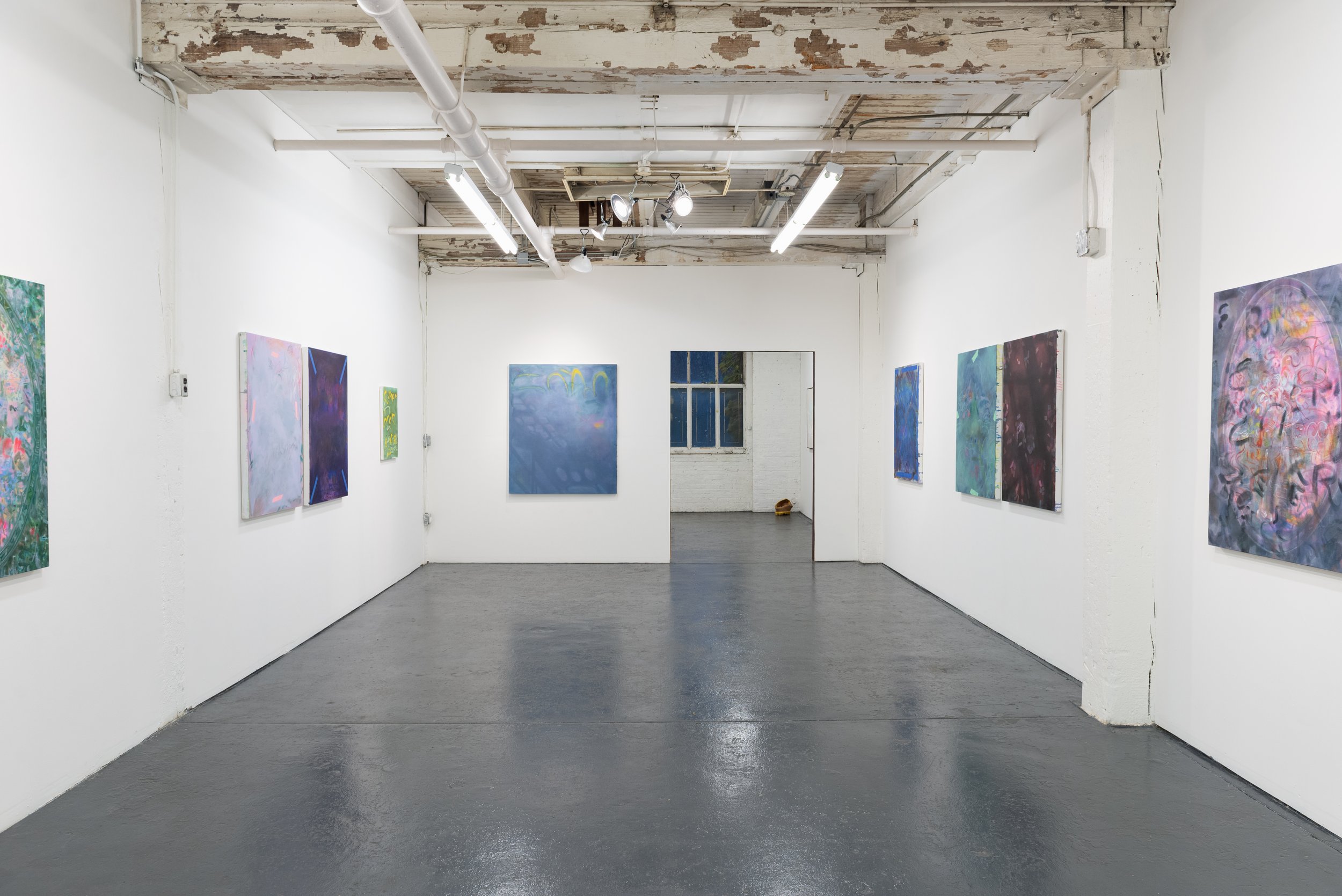
REVIEW: Madeline Gallucci, “sound of my father singing” at Goldfinch
In Douglas Sirk’s 1955 All that Heaven Allows, Jane Wyman plays a lonely middle-aged widow whose isolated existence is upended upon the appearance and romantic pursuit of her younger arborist, played by Rock Hudson. Audiences are introduced to Cary Scott (Wyman) as a woman who has spent the majority of her life pleasing those around her: whether that be her deceased first husband, her now grown children, or the other members of her elitist WASP community.
Throughout the film, Sirk reveals glimpses of Cary’s changing inner life through vanity mirrors, window panes, and the sheen of electronic screens. Viewers rarely see a close-up of Wyman’s face shot straight on; rather there are glimpses, hints, and wavering smiles caught through frosted reflections. A friction exists here, a thousand unknown memories and past lives. What is it that we can see in Sirk’s film and what does this vision allow us to truly know about Cary?

OP-ED: Unintelligible Horizons: CAB5 & The Urgent Need For New, Relevant Global Perspectives
The Chicago Architecture Biennial recently opened the fifth edition of its international exposition to a decidedly mixed reception. Organized by museological local celebrity collective the Floating Museum (two of the collective’s members are former contributors to the Bridge Journal), the event was moved to a phased opening starting with previously scheduled local events, with the main program set to open earlier this month. Giving up the prime time opening at the start of the fall season was already, I thought, something of an indicator of the event’s faltering ambitions. Despite half a million dollars in state funds and several tens of thousands from various private foundations (including a reported $110,000 from the Terra Foundation and $40,000 from the Graham Foundation for a Mecca Flats “architectural scale” inflatable monument that has yet to materialize), reviews so far seem to indict the event planner’s insular lack of intellectual rigor about architecture’s role in a world with serious problems.

FICTION: “Waiting for My Prince Who is a Clever Queen” by Amy Bobeda
I am grading assignments that are 68 days late. I am grading assignments that are so late they are no longer assignments. They are tufts of fur the spirit of the assignment ate and coughed up 67 days later. They are matted and fuzzy and one is a little bit moldy. “The person who makes you wait is the one who holds the power,” a friend says in a women’s circle. She learned this lesson about power and waiting from Betty Draper on an old episode of Mad Men the night before the courts announce they may reach a ruling on the legality of mifepristone or they may extend the ruling deadline. They may strike their gavels or allow them to float midair a while longer.

